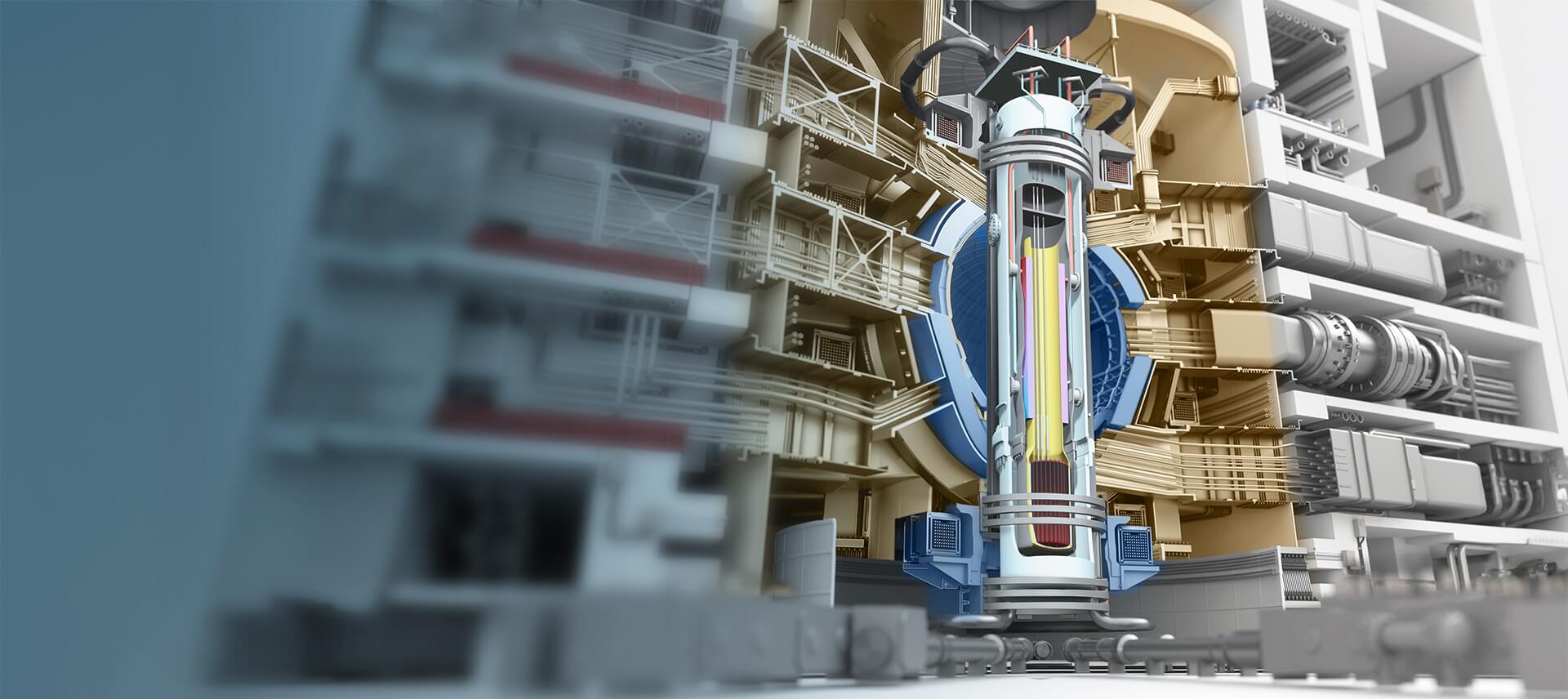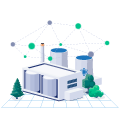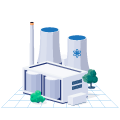Advancing Nuclear Reactor Innovation With Digital Solutions
Optimize the design of small modular reactors with the virtual twin experience.
In the field of nuclear fusion, the global race to achieve sustained plasma confinement and self-sustaining reactions is advancing rapidly. As breakthroughs emerge, the focus is shifting toward making fusion energy a scalable and commercially viable carbon-free power source.
Dassault Systèmes empowers innovators with virtual twin technology, advanced simulation and collaborative digital engineering to revolutionize the development and deployment of next-generation nuclear energy systems.
Achieve Climate Targets With Nuclear
9%
of the world s electricity is currently supplied by nuclear power, with 440 operational reactors worldwide
66Gt
of carbon emissions have been avoided globally through nuclear energy since 1971, supporting clean energy
30GW
of new nuclear capacity per year will be needed in the early 2030s to meet climate goals by 2050
Unlock the Future of Modern Nuclear Reactors
The nuclear energy landscape is evolving rapidly, with advanced nuclear reactors, small modular reactors (SMRs), generation IV reactors and nuclear fusion technology poised to redefine the future of clean energy. Developing and deploying these next-generation technologies comes with complex challenges — from optimizing reactor design and streamlining licensing for compliance to advancing fuel cycles while achieving cost efficiency.
The Nuclear Power Plan
Explore how digital engineering, virtual twins and advanced simulation drive nuclear innovation, reduce risks and accelerate breakthrough technologies to market.
Key Benefits of the 3DEXPERIENCE Platform for SMR Design
- Virtual twin technology for full lifecycle management
The virtual twin provides a holistic view and full traceability throughout the entire lifecycle of a nuclear reactor — from initial requirements to final deployment. Powered by the 3DEXPERIENCE platform, it ensures seamless collaboration, optimized decision-making and risk mitigation.
- Data-driven decision-making
Through advanced simulation-driven testing, the virtual twin gathers and structures complex data, allowing for an in-depth analysis of variables and potential outcomes to achieve optimal results.
- A single source of truth
The 3DEXPERIENCE platform ensures compliance with stringent safety, security and regulatory requirements. With end-to-end traceability, model-based systems engineering (MBSE) and robust requirement management, it supports smooth licensing and regulatory approvals.
Need to Know: Nuclear Generators and Power Plants
The future of nuclear energy relies on digital innovation. By leveraging virtual twins technology and model-based systems engineering, we can accelerate reactor design, optimize the supply chain and streamline licensing — turning breakthrough technologies into deployable, scalable solutions for a sustainable future.
Watch How Nuclear Companies Transform Clean Power
Driving Advancements in Nuclear Energy
The next generation of SMRs and advanced nuclear reactors are transforming the energy landscape with scalable, low-carbon solutions. While SMRs enhance flexibility and efficiency, innovators push nuclear fusion toward commercial viability.
The 3DEXPERIENCE platform empowers innovators with virtual twin technology to optimize designs, streamline licensing and strengthen safety cases — accelerating the deployment of advanced nuclear solutions.
From fission to fusion, digital innovation is key to scaling the nuclear industry and advancing the global clean energy transition.
Discover the Customers Leveraging Dassault Systèmes Solutions
Explore Our Solutions
Find out how our industry solutions can help companies accelerate battery development, from cell innovation to gigafactory scale-up.
The Power Plan for a Smooth Energy Transition
Ready to accelerate the shift to clean energy for a brighter tomorrow?




